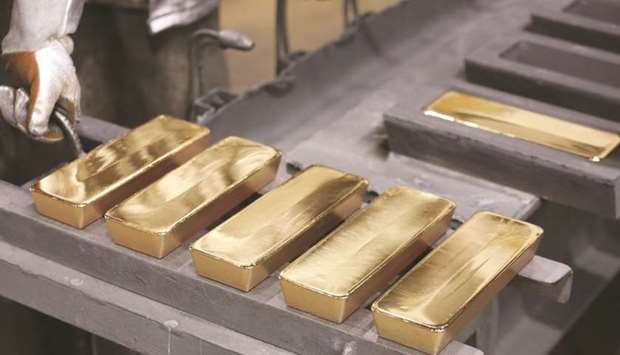CME Group Inc is expanding delivery of its new gold futures contract to London vaults, the latest response to an extreme dislocation between the two most important markets for the precious metal.
The gold market was upended in late March as lockdowns grounded planes and closed refineries, leading traders to worry they wouldn’t be able to get gold to New York in time to deliver against futures contracts. That caused futures, which typically trade in lockstep with the London spot price, to soar to a premium of as much as $70 an ounce.
CME, which owns Comex where the main gold futures contract is listed, said in March it would offer a new futures contract with expanded delivery options that included 400-ounce bars, which is the size that’s accepted in the larger spot market in London.
On Tuesday, it announced that traders will also be able to deliver gold in London vaults against the new contract, saying the move would “provide market participants greater opportunity to make and take delivery.”
However, the move falls short of what some market participants had been hoping. The main “GC” gold contract is still only deliverable in the US using 100-ounce bars or kilobars. The new contract, known as “enhanced gold” or “4GC,” has hardly traded in its first three months, and both traders and the exchange acknowledge it will take time to build up critical mass.
Meanwhile, the GC contract continues to trade at a usually large premium to the spot price, of over $10 an ounce. The dislocation has inflicted painful losses on banks, which typically sell futures in New York as a hedge for their positions in the London market. HSBC Holdings Plc, for example, suffered mark-to-market losses of close to $200mn in one day in March, according to a regulatory filing.
If it’s adopted by the largest participants in the London market, CME’s move could have wider implications: It could help shed new light on the gold holdings in the city. Exchange rules require vaults to report daily inventory levels even when metal isn’t marked for delivery.
“When London vault applications are submitted and approved, they will follow the same guidelines as those of all exchange-approved facilities for metals,” a CME spokesperson said in emailed response to Bloomberg questions.
“Additional inventory will depend on the vaults that are approved and onboarded by the exchange.”
The changes are set to take effect mid-July and will apply to contracts deliverable from September onward. Exchange rules stipulate that any approved gold-storage facilities must report on a daily basis the amount of gold that is acceptable for delivery against futures contracts, whether the metal is marked for delivery or not. The same rules will apply to storage facilities in London, potentially bringing more transparency if vaults apply to hold inventory backing the contract.

Freshly cast gold ingot bars sit in the foundry at a non-ferrous metals plant in Krasnoyarsk, Russia. CME Group is expanding delivery of its new gold futures contract to London vaults, the latest response to an extreme dislocation between the two most important markets for the precious metal.
